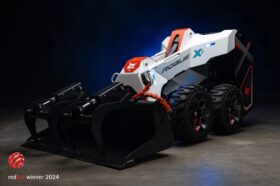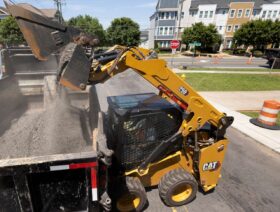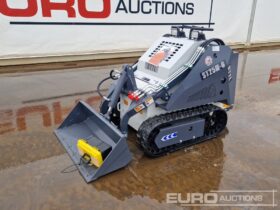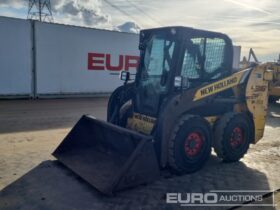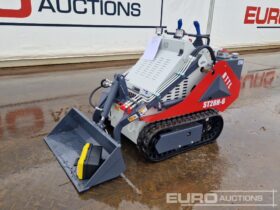Skid Steer Loaders for Sale (76)
Need Help Buying a Skid Steer?
It pretty much started with Bobcat back in the late 1950’s but now there is a huge choice of manufacturers of skid steer loaders – also known simply as ‘SSL’. But how do you know you need one rather than a larger, more traditional loader? The simple answer is, if the space on site is tight, then you need a loader than can turn around in its own width – that’s where the skid steer comes in. Of course, a skid steer can do much more than load – there are tonnes of attachments for them these days. Read on to find out about the main types of skid steer loaders – wheeled and tracked and ‘Radial Lift’ vs. ‘Vertical Lift’.
More Skid Steer Loaders Info
Why is it called a Skid Steer?
To operate one, you don’t need to know exactly how it works or when and how it was invented, but the loader’s weight is distributed unevenly meaning that one part is heavier than the other. The wheels on the heavier side of the loader counter rotate. This pivots the loader so that the two wheels on the other side ‘skid’ in the direction of the turn. If the machine has tracks, then it is often called a ‘compact tracked loader’ although the jobs they do are largely similar to a wheeled skid steer, they perform better on unstable surfaces and a more sure-footed in digging and slightly easier to manoeuvre through gaps. there are relatively few of these machines in the UK market so, at Plant Pages, we categorise them all in one place.
Radial Vs. Vertical Lift
The vertical lift versions came over ten years after the first radial designs. Invented by New Holland in the 1970s, they have a higher reach and, whilst they won’t match a telehandler for performance, the vertical lift machines will reach higher than a radial machine which swings from a single pivot so the bucket follows an arc when raised. This means that if you are digging out, go for a radial machine, if you are lifting and loading then opt for the vertical system. The vertical machines can typically lift more than the radial machines and keep the load closer to the machine. You can usually tell the machines by a model number; the manufacturers often use the letter R or V to denote the type. Both the wheel and tracked SSL have options for vertical or radial lift.
If you are not sure, take advice, but it is likely that you will be opting for the radial version.
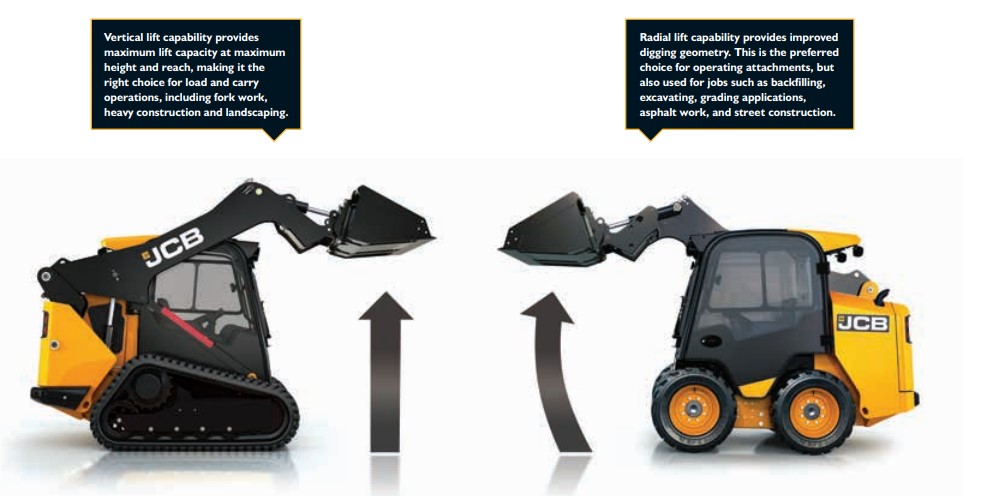
Which Size Skid Steer do I need?
These machines are meant to be compact, so there is usually little difference in actual size between the models. You can usually specify a small, medium or large frame which will have capacities u to 750, 1000 and above 100kg respectively. If there are width restrictions to your work (domestic or landscaping works for example, then a small frame would suit best. The medium option is a solid all-rounder, whist a large frame version may best find itself at home in demo spec (demolition) with added protection against falling materials.
Take the smallest JCB the Radial 155 at 3.49 metres long as an example – the largest version (330 Vertical) is only 3.8 metres long with a difference in bucket capacity of 0.36m3 to 0.43m3. The difference is in the rated operating capacity (ROC) which starts at 703kg for the 155 and increases to more than twice this at 1495 for the 330 model. What is the ROC? It is 30-50% of the load it takes to tip the machine over. So the machines can lift more than the ORC but at your peril!
The engine power influences the rating of the machine – the larger the lifting requirement the more powerful the engine. Check out each of the manufacturer’s pages here at Plant Pages for more detail on what is available.
Attachments – Hydraulic Capacity & Flow
Does the machine you are looking at have standard or high flow hydraulics to run the various attachments you may need. Smaller machines will have a standard flow of around 70 litres per minute (lpm) with larger machines offering nearer 90. Higher flow machines will start at 100 (lpm). Higher flow machines are usually an extra cost option or an upgraded model and will have flows around 125 lpm.
Popular Skid Steer Manufacturers
Bobcat (Used Bobcat skid steer loaders for sale at Plant Pages)
Case (Used Case skid steer loaders for sale at Plant Pages)
Gehl (Used Gehl skid steer loaders for sale at Plant Pages)
JCB (Used JCB skid steer loaders for sale at Plant Pages)
Latest News About Skid Steer Loaders
Komatsu Reveals New Skid Steer Loader and Compact Track Loader
Komatsu has announced the launch of one new 4-tonne skid steer loader and one new 5-tonne compact track loader at bauma 2025 in Munich, Germany. The new compact track loader prototype and skid steer loader prototype join the “dash 8” range to deliver unbeatable customer values to the loader sector. They are specifically focused on...
Bobcat Wins Red Dot Design Award for RogueX2 Loader Concept
Bobcat has been selected as a Red Dot Award: Design Concept winner for RogueX2, an all-electric, fully autonomous concept loader. The Red Dot Design Award is one of the most respected design awards in the world, with its Design Concept category identifying and celebrating new design concepts and innovations as the precursors of tomorrow’s great...
Caterpillar launches 8 new Cat Skid Steer Loaders & Compact Track Loaders
Caterpillar has introduced eight, new next generation Cat Skid Steer Loader (SSL) and Compact Track Loader (CTL) models. Four new Cat SSLs – the Cat 250, 260, 270, and 270 XE – mark the introduction of the next generation design to the SSL line. Meanwhile, the new Cat 275, 275 XE, 285 and 285 XE...
Bobcat Unveils World’s First All-Electric Skid-Steer Loader
Following the 2022 release of the Bobcat T7X, the world’s first all-electric compact track loader, Bobcat has now unveiled the world’s first all-electric skid-steer loader, the Bobcat S7X. “At Bobcat, we are always pushing the boundaries to explore the next leading advancements that help our customers accomplish more and propel the industry forward,” said Scott...
New Options for Caterpillar Skid Steer & Compact Track Loader Blades
Caterpillar announces new options for the Cat® Smart Grader Blade and Smart Dozer Blade. The new external control kit for GB120 and GB124 smart grader blades expands use of these blades to Cat D and D2 series SSL and CTL machines, enabling customers with previous model fleets to run smart blades. The new 3D grade...


